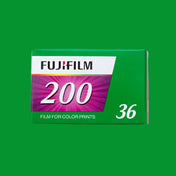Architectural Photography Tips and Tricks
Architectural photography is a captivating genre that allows photographers to capture the beauty and essence of buildings and structures. It goes beyond simply documenting the built environment; it is a form of art that showcases the design, form, and function of architectural subjects. By highlighting architectural features, lines, and angles, architectural photography creates visually appealing images that convey the unique character and beauty of buildings.
Understanding Architectural Photography
Architectural photography is a genre of photography that focuses on capturing the aesthetic appeal of buildings and structures. It involves showcasing the architectural features, lines, and angles of a subject, highlighting its design, form, and function. This genre of photography captures the built environment and is popular among architectural photographers, real estate professionals, and those who appreciate the beauty of architecture.
What is Architectural Photography?
Architectural photography is a genre of photography that emphasises the aesthetics of buildings and structures. It involves capturing the impressive architecture of buildings in a visually appealing manner. Architectural photographs showcase the architectural features, lines, and angles of a subject, highlighting the unique design, form, and function of the architectural subject. These photographs are often used to document the architectural heritage and cultural relevance of buildings, provide a visual record of architectural evolution and history, and contribute to the preservation and appreciation of architectural landmarks. Architectural photography is a genre of photography that captures the built environment and is popular among architectural photographers, real estate professionals, and those who appreciate the beauty of architecture.
Importance of Architectural Photography
Architectural photography plays a crucial role in highlighting the architectural features, design, and excellence of buildings. It serves as a visual medium to document the architectural heritage and cultural significance of buildings, providing a visual record of architectural evolution and history. In the real estate industry, architectural photography is essential for showcasing properties, attracting potential buyers, and conveying the beauty and unique features of a building. With the rise of social media, architectural photography has gained even more importance as it has the ability to captivate and engage audiences on platforms such as Instagram, Facebook, and Pinterest. These platforms provide a powerful platform for architectural photographers to showcase their work, gain exposure, and connect with a wider audience.
Different Styles of Architectural Photography
Architectural photography encompasses various styles, each emphasising different aspects of buildings and structures. From exterior architectural photography, which captures the impressive exteriors of buildings, to interior architectural photography, which highlights the design, details, and ambiance of interior spaces, there are different approaches to capturing the essence of architecture. Cityscape photography, another style of architectural photography, focuses on the architectural landscape and skyline of urban environments, showcasing the architectural diversity and urban development of cityscapes. Each style offers its unique challenges and opportunities, allowing photographers to explore different perspectives and showcase the architectural excellence in their photographs.

Exterior Architectural Photography
Exterior architectural photography involves capturing the impressive exteriors of buildings and architectural structures. It focuses on highlighting the architectural features, symmetry, and details of building exteriors, showcasing the grandeur and scale of buildings. Vertical lines, a prominent feature in architectural photography, convey a sense of strength and stability, while the natural environment can add context and depth to the composition. The use of natural light enhances the texture and details of the building, creating a visually striking image. Exterior architectural photography allows photographers to capture the architectural excellence and design of buildings, conveying the unique character and beauty of the architecture through visually captivating photographs.
Interior Architectural Photography
Interior architectural photography focuses on capturing the interior spaces of buildings, highlighting their design, details, and ambiance. It involves showcasing the architectural features, lighting, and spatial elements of interiors, conveying the unique character and beauty of the interior spaces. Interior architectural photography is popular among interior designers, architects, and those who appreciate the aesthetics of interior spaces. It allows photographers to showcase the architectural excellence and craftsmanship of interior spaces, capturing the essence of the architecture and the designed environment. By focusing on the architectural details, lighting, and composition, interior architectural photography highlights the functionality, beauty, and unique features of the interior spaces.
Cityscape Photography
Cityscape photography involves capturing the architectural landscape and skyline of urban environments. It showcases the architectural diversity, urban development, and architectural landmarks of cityscapes. Photographers capture cityscapes at different times of the day, taking advantage of the changing light and atmosphere. Whether it's the vibrant energy of a bustling city during the day or the captivating lights of a city at night, cityscape photography allows for the exploration of different perspectives and the showcasing of architectural grandeur and modernity. From the iconic skyline of New York City to the architectural wonders of London, cityscape photography captures the architectural richness and dynamic of urban environments, providing a visual feast for architectural photography enthusiasts.

Equipment Essentials for Architectural Photography
Architectural photography requires the right equipment to capture the architectural details, lines, and nuances of buildings and structures. The right equipment enhances the photographer's ability to capture the essence and beauty of architecture, whether it's the photography of contemporary architecture, tall buildings, or historic structures. Key equipment essentials for architectural photography include a camera, lenses, and a tripod. These tools provide the photographer with the necessary control, focal length options, and stability to capture impressive architectural photographs. Other accessories such as lens hoods, speedlights, and shutter releases can further enhance the photography experience, allowing photographers to control lighting, capture long exposures, and experiment with different techniques.
Exploring Camera Options
When exploring camera options for architectural photography, it's essential to consider image quality, features, and interchangeable lens cameras. High resolution, dynamic range, clear viewfinders, and user-friendly controls are crucial. Functionality and ease of use must also be taken into account when choosing the right camera.
The Right Lens for Architectural Photography
The proper lens selection is crucial for architectural photography. Wide-angle lenses capture architectural perspectives, while tilt-shift lenses correct perspective distortion. Exceptional sharpness and minimal distortion are vital, alongside the right focal length. Specialised lenses for cityscapes and exteriors play a significant role in this genre of photography.
Importance of Tripod and other Accessories
Stability is crucial in architectural photography. A tripod reduces blurry shots, especially for long-exposure shots capturing architectural lighting. Accessories like a remote shutter release minimise camera shake, while wide-angle lenses and a lens hood are helpful. Additionally, supplemental lighting tools enhance interior photography, ensuring high-quality shots.
Leveraging Vintage and Film Cameras in Architectural Photography
When capturing contemporary architectural designs, vintage and film cameras offer a unique perspective. Interior designers often seek photography of contemporary architecture that embraces the nostalgia of bygone eras. Additionally, the white architecture of New York and London provides the perfect backdrop for exploring this genre of photography. Leveraging vintage and film cameras allows a fresh click of a button to capture single details or expansive shots
Benefits of Using Film Cameras
When using film cameras for architectural photography, a deliberate and intentional approach to composition is encouraged. The unique colour rendition of film adds a vintage charm to the photographs, fostering a deeper connection with the architectural subject. The tactile nature of film photography allows for a hands-on experience, promoting creativity and intentionality.
Unique Shots with Vintage Cameras
Capturing architectural details with a distinct, artistic flair, vintage cameras add a delightful, old-world charm to architectural imagery. Utilising vintage lenses creates a sense of nostalgia and romanticism, offering a different perspective for visually compelling architectural shots. Vintage photography equipment lends a unique, atmospheric quality to architectural photographs.
Techniques to Improve Architectural Photography
Improving architectural photography involves mastering the use of different types of shots and lenses, maintaining a keen eye for single details, and understanding the interplay of light and shadow. Additionally, adjusting the shutter speed and experimenting with HDR imaging can enhance the visual appeal of photographs of buildings.
Role of Lighting in Architectural Photography
Accentuating architectural features, natural lighting creates a vibrant, authentic ambiance. Interior lighting highlights spaces, emphasising design and functionality. Artificial lighting offers creative control over the mood. Different times of the day provide diverse lighting opportunities. Understanding light and shadow showcases the depth of architectural spaces.
The Art of Composition in Architectural Photography
When capturing architectural photography, framing the subject against natural elements adds depth. Exploring various perspectives, like low angles, provides dynamic views, while focusing on architectural details highlights design excellence. Incorporating diagonal lines and vertical symmetry creates engaging compositions, and leveraging the entire frame enriches storytelling.
Navigating Challenges in Architectural Photography
Navigating the challenges in architectural photography requires understanding how to overcome perspective distortion, adapt to challenging lighting conditions, capture large buildings with a clear view, balance interior and exterior exposure, and manage architectural details and textures with precision. The mastery of exposure blending techniques and strategic positioning are essential for achieving great results.
Post-Processing in Architectural Photography
After capturing stunning architectural photographs, the post-processing stage is crucial for achieving the desired aesthetic. Interior designers often seek photography of contemporary architecture for their portfolios. Post-processing enhances images of New York's contemporary and white architecture. Different types of shots require specific editing techniques. Architecture firms use post-processing to showcase their projects on social media. Using HDR image processing, photographers can capture the intricate details of a tall building at sunset.
Introduction to Post-Processing Software
Enhancing architectural photographs with nuanced edits and perspective correction is made easy with post-processing software. It empowers photographers to create visually striking images, opening up endless creative possibilities for architectural photography. Mastering post-processing techniques elevates the visual impact of architectural imagery, refining colours and details to create stunning visuals.
Can Post-Processing Enhance Architectural Photography?
Post-processing is a powerful tool that can elevate the quality of architectural photography. By enhancing details, correcting distortions, and optimising lighting, post-processing brings out the best in architectural images. It allows for stunning visuals that capture the beauty and intricacies of architectural design.
Frequently Asked Questions
What kind of equipment do you need for architectural photography?
To capture stunning architectural photographs, it's essential to have the right equipment. A camera with manual control settings allows for precise adjustments. Wide-angle lenses help capture the entire structure. A tripod ensures stability and sharpness, especially for long exposures. Additional useful gear includes a cable release, filters, and a spirit level.
What post-processing techniques are commonly used in architectural photography?
Post-processing techniques commonly used in architectural photography include adjusting exposure, contrast, and colour balance. Straightening vertical lines and correcting distortion are also important. Enhancing details with sharpness and clarity can make the photo pop. Noise reduction and removing distractions improve the overall look of the image.
Who are some famous photographers known for their work in architectural photography?
Some well-known photographers in the field of architectural photography include Julius Shulman, known for his iconic images of mid-century modern architecture in California. Ezra Stoller captured the sleek lines of modernist buildings in the 20th century. Iwan Baan is recognised for his unique perspectives and use of natural light, while Todd Eberle excels at capturing architectural details.
Conclusion
To wrap it up, architectural photography is an art form that requires a deep understanding of the subject and the right equipment. By capturing the essence and beauty of architectural structures, you can create stunning visuals that leave a lasting impact. Whether you're photographing exteriors, interiors, or cityscapes, lighting and composition play a crucial role in achieving the desired results. Don't be afraid to experiment with different techniques and equipment, such as vintage cameras, to add a unique touch to your work. And remember, post-processing can enhance your images and bring out their full potential. So go out there, explore the world of architectural photography, and let your creativity shine through!













